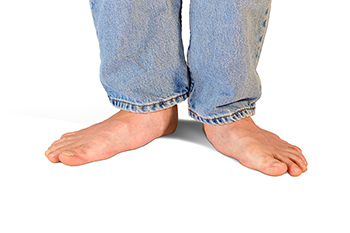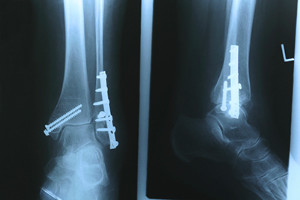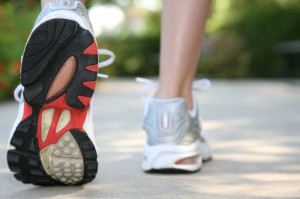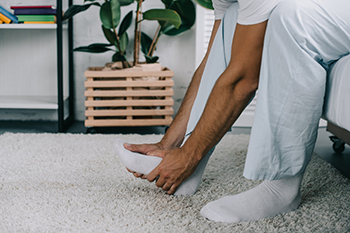
Flat feet are common, especially among young children who are born with them. Within a few years, however, most children’s arches develop naturally. In general flat feet, medically known as pes planus, are caused by the collapse of the medial longitudinal arch of the foot. There are three main types of flat feet. The first is termed flexible flat feet, which affects both feet, is generally painless, and does not usually cause any disability. This is the type that is most common in young children. In flexible flat feet, the arch appears to be present when the foot is at rest. It only becomes flat when bearing weight. The second type, flexible flat feet with a shortened Achilles tendon, also affects both feet, but may cause some disability and pain. This can be diagnosed by studying the range of movement in the ankle, which indicates the length of the tendon. The third type is termed rigid flat feet. It is far less common, but may cause pain and some disability. In rigid flat feet, the arch remains permanently flattened. This condition is frequently linked with bone or inflammation disorders. For more information on flat feet, please consult a chiropodist.
Flat feet are a common foot condition. If you are experiencing pain or discomfort due to flat feet, please consult with one of the specialists from Thornhill Foot Clinic. Our chiropodists will assess your condition and provide you with quality foot and ankle treatment.
What Are Flat Feet?
Flat feet are feet that do not have a well-defined arch in the middle of the sole of the foot. Flat feet may be flexible or rigid. Flexible flat feet have an arch when there is no pressure put on the foot, such as when one is sitting, but the arch disappears upon standing. Rigid flat feet lack an arch regardless of whether one is standing or not.
Causes
Flat feet can be present from birth or acquired over time due to a weakening of the ligaments in the arch. Sometimes flat feet are caused by illnesses, injuries, or pregnancy.
Symptoms
Flat feet often cause no noticeable symptoms. However, some people may experience pain and discomfort due to their flat feet.
Symptoms associated with flat feet include:
Pain in the arch, heel, ankle, or along the outside of the foot
Overpronation of the foot
Shin splints
Aching or fatigue in the feet or legs
Pain in the knees, hips, or lower back
Treatment
In cases where flat feet cause symptoms, there are various treatments available. Wearing orthotic inserts in your shoes to provide more arch support, performing stretches, and taking medications may improve your symptoms. If you are overweight, losing weight can help relieve pressure on the feet. In severe cases, surgery may be considered.
If you have any questions, please feel free to contact our office located in . We offer the newest diagnostic and treatment technologies for all your foot care needs.

 Falling
Falling 





 Foot pain
Foot pain